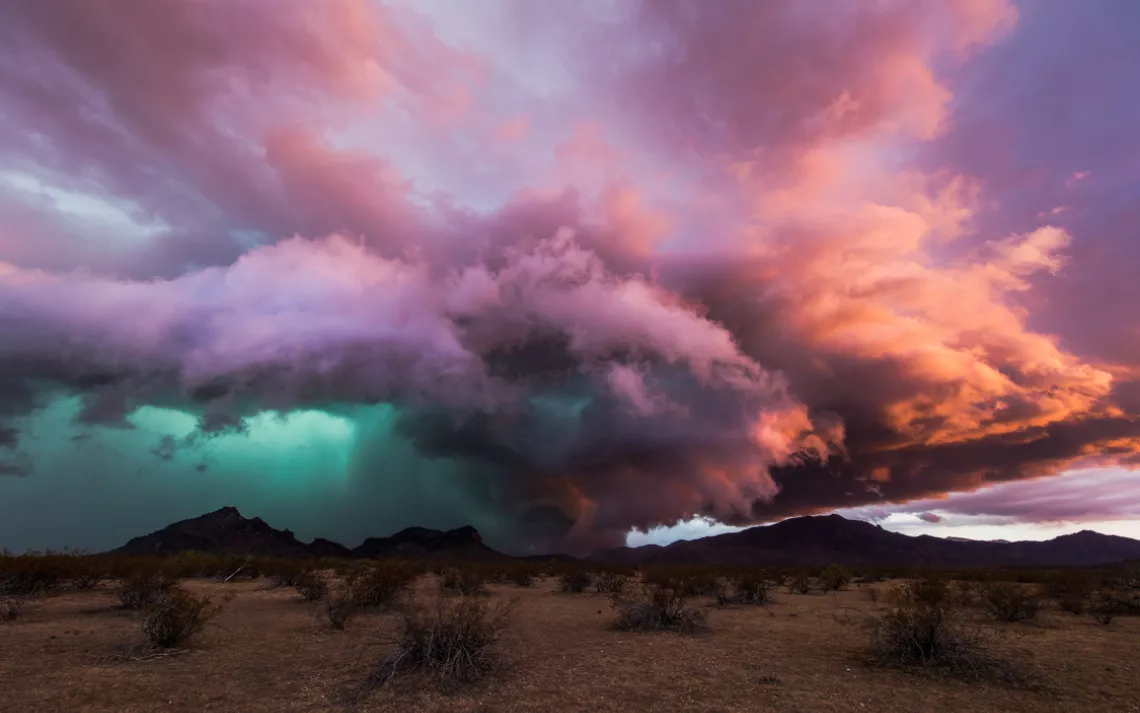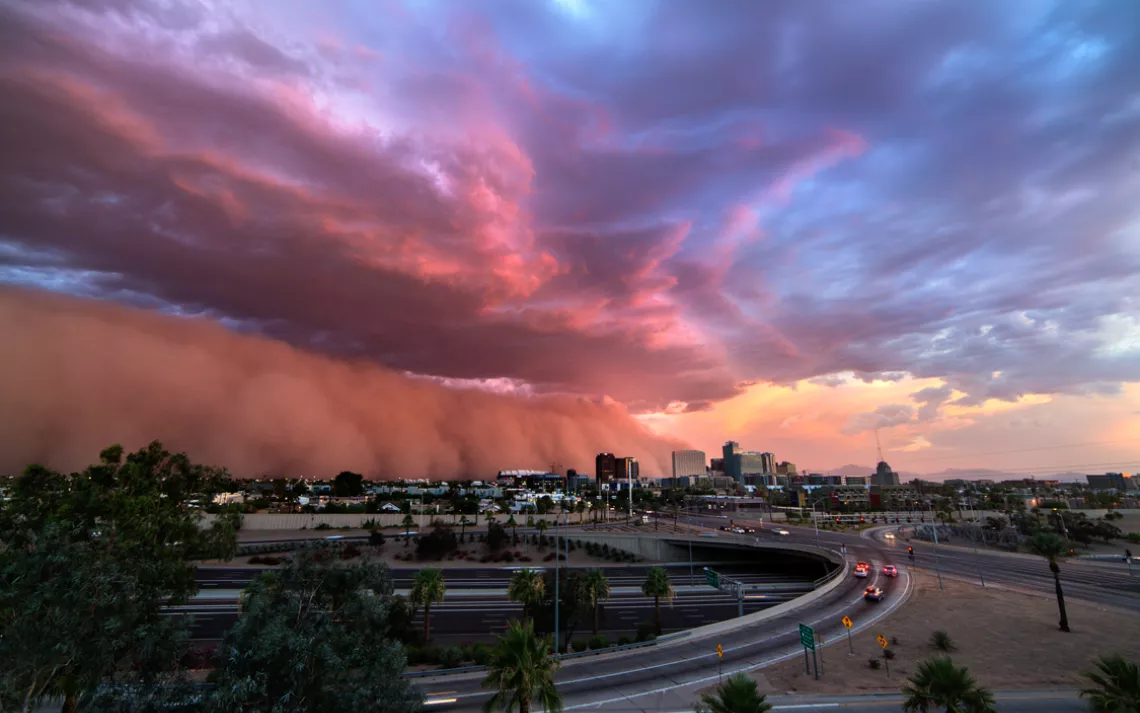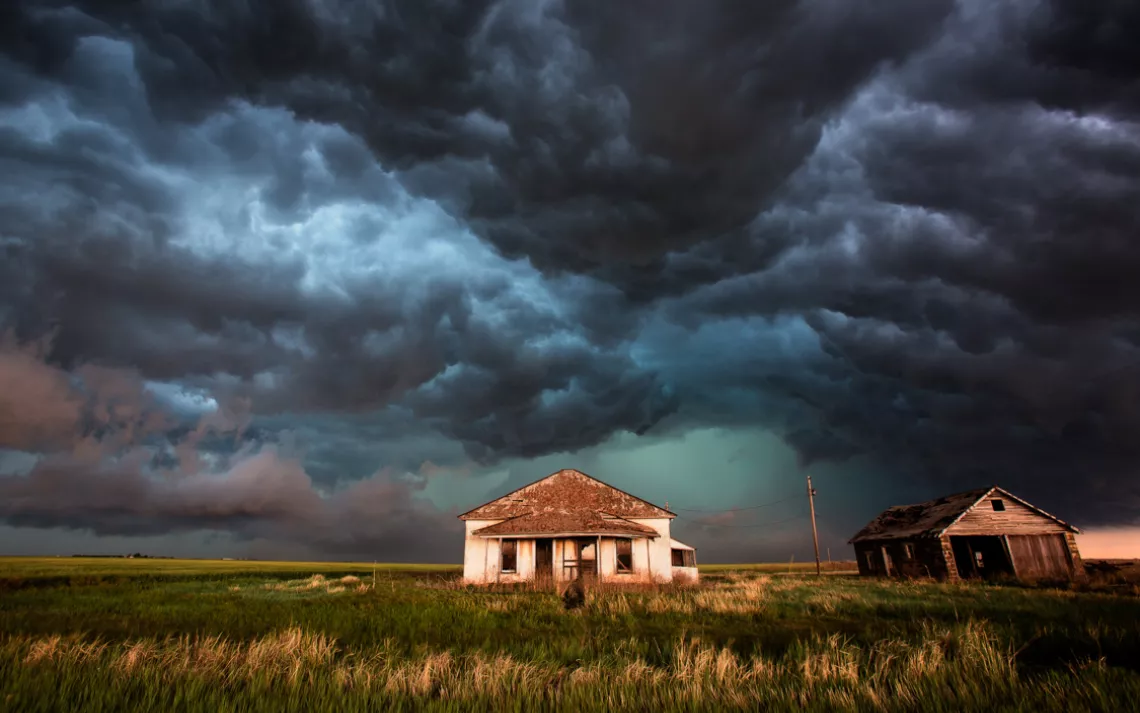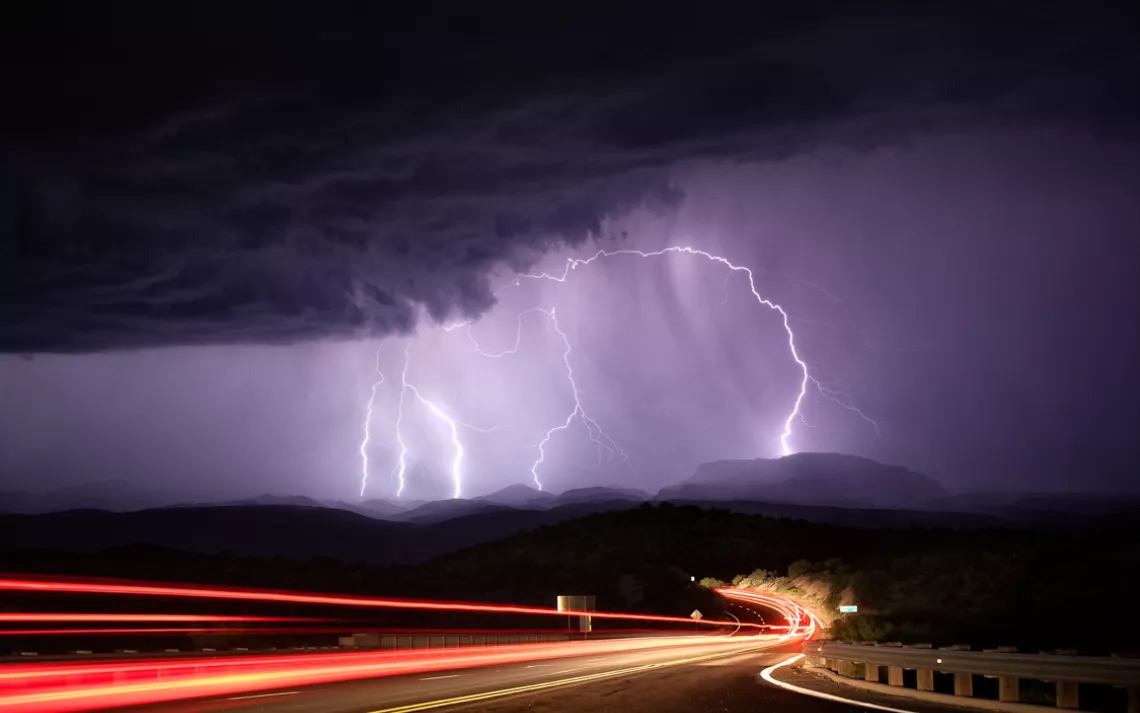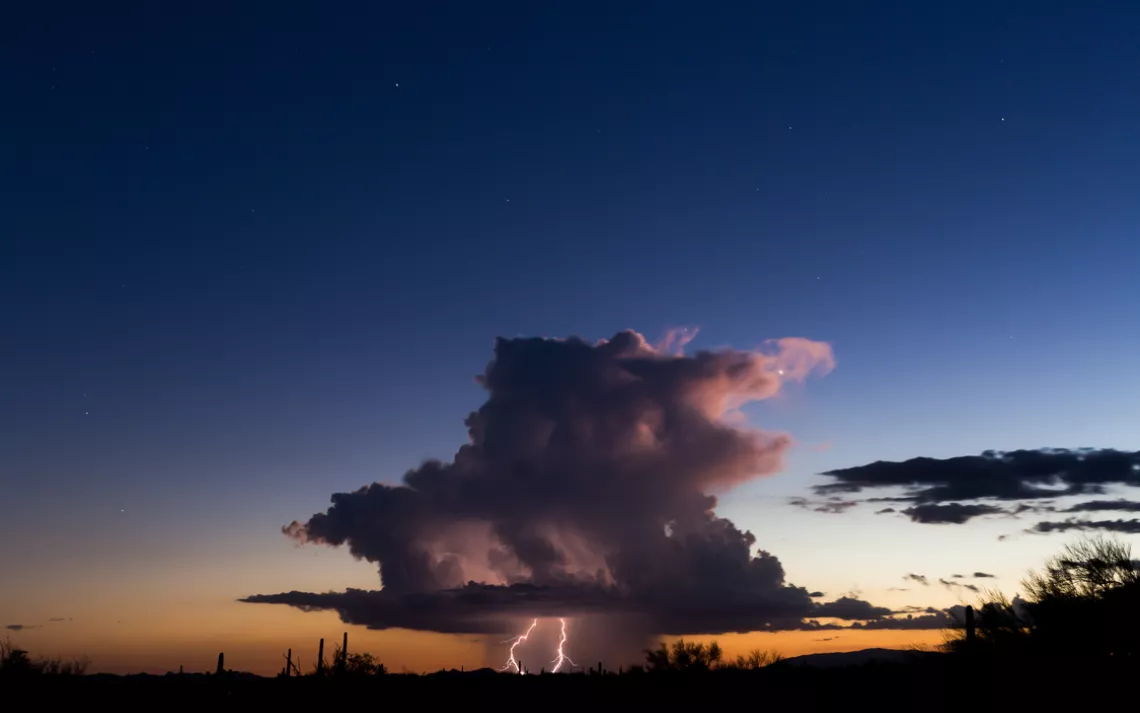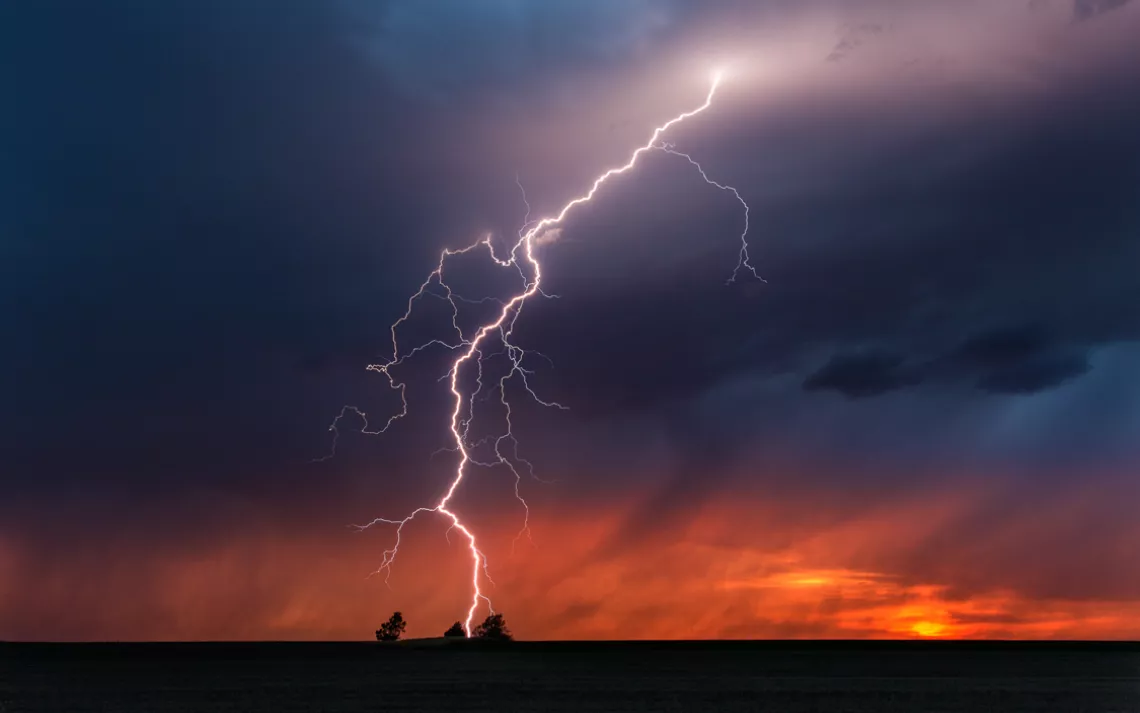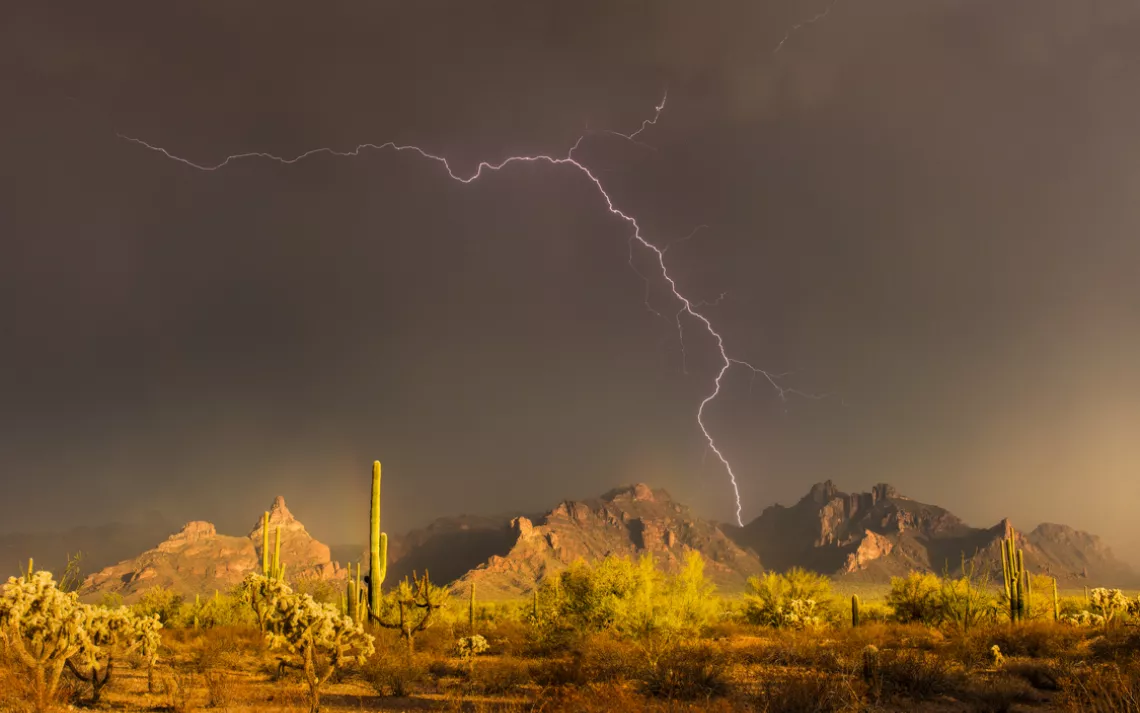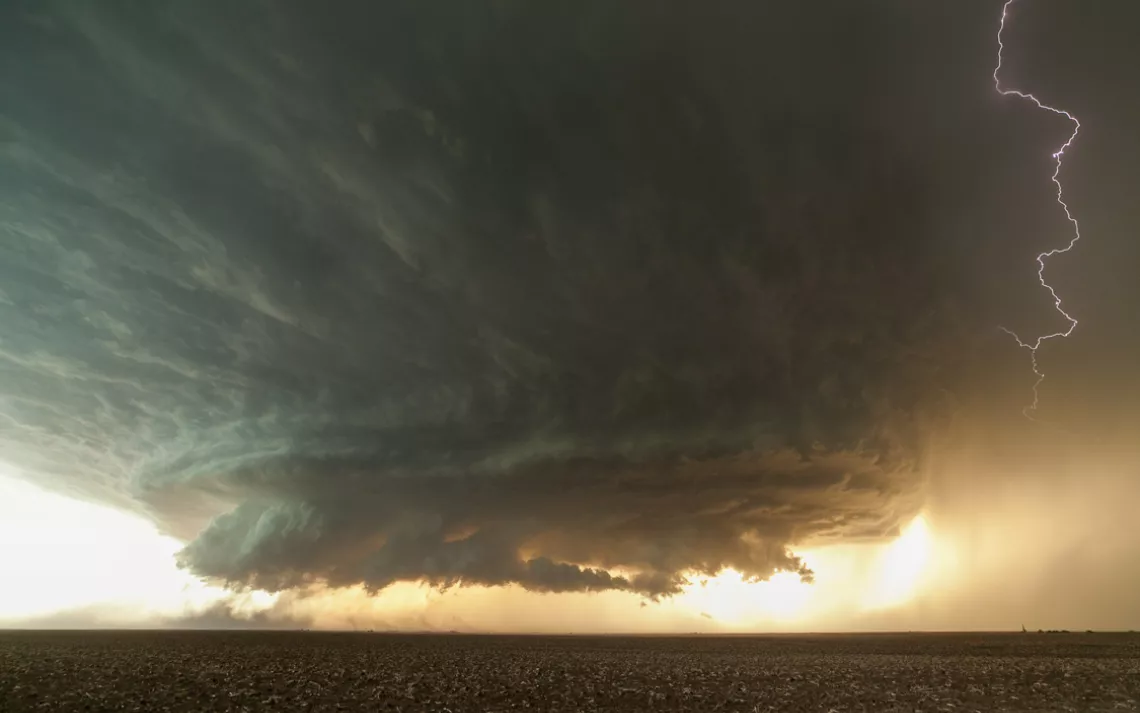The Wild Beauty of Summer Storms
Photographer Mike Olbinski chases extreme weather across the United States
Mike Olbinski’s 2014 Toyota 4Runner has over 200,000 miles on it and hundreds of small dents in the roof left by hail. Those miles span much of the American Great Plains, between Olbinski’s home in Phoenix over to West Texas, and all the way up to the Dakotas or Montana. The dents come from the weather he chases. A mounted laptop with radar, GPS tracking, and weather models tells him where to go. “You have to go where the storms are,” he says.
Olbinski is an award-winning photographer, filmmaker, and self-taught storm chaser. During the peak storm season between May and August, he might be anywhere in middle America, capturing thunderheads in Oklahoma, a tornado in Kansas, or a haboob in Arizona. His work has appeared in magazines, documentaries, commercials, and even the big screen: One of his supercell clips costars with Natalie Portman and Chris Hemsworth in Thor 2.
“I grew up loving weather,” he says. “Any time I’m motivated to take a picture of something, it seems to be weather.”
As boys in Phoenix, Olbinski and his brother often watched summer storms through their bedroom window. They saw the monsoon season—usually between July and August, when much of Arizona receives half of its annual rainfall—as a cool and colorful relief from both the triple-digit temperatures and the monochromatic desert landscape.
When Olbinski was 12 years old, lightning from one of these storms struck directly behind their house. “It was so close, and so bright,” he says. “I still remember everything about that moment.” To Olbinski, that single bolt represents the start of a lifelong obsession.
Olbinski photographed storms with a point-and-shoot from his home in Phoenix well into adulthood, before he decided to try his luck chasing. Almost a decade ago, around the time his first daughter was born, he sold his DVD collection for his first DSLR. He flew to Denver, rented a car, and drove to Nebraska. “It wasn’t really a great chase,” he admits. “I didn’t know what I was doing.”
But every summer, he would head for the plains for weekends at a time. He learned how to read forecast models. He met and learned from other chasers.
Then, in 2013, Olbinski and a fellow weather buff named Andy Hoeland set up a tripod outside a small oil boomtown named Booker in the Texas Panhandle. In frame, the sky darkened, the wind funneled and began to rotate, lightning struck. Olbinski watched what he had been chasing for four years. “I was in tears,” he says. “I couldn’t believe we finally did it. We saw our first real supercell.”
Olbinski refers to this “life-changing” storm as the Booker Supercell. His footage of it went viral and eventually caught the eye of Marvel Studios—marking the moment Olbinski thought of chasing storms as an actual career path. Over time, he continued to study weather forecasting and photography, going out for longer periods of time and producing more work, improving his sense of composition and lighting.
Today, Olbinski is a full-time photographer who wears two hats. As a storm chaser, he leads tour groups, produces storm documentaries, and licenses footage. October in Arizona then marks the end of storms and the beginning of wedding season. Between then and spring, Olbinski might photograph around 10 weddings and a few dozen family photo sessions—engagements, newborns, family portraits, and so on. A father of three, Olbinski appreciates the role photography can play in capturing familial moments.
But by the first of May, he stops booking weddings and starts chasing. Each year, he logs more and more days on the road and covers more ground, sometimes following the forecast across four state lines. He might spend weeks on the road, or chasing around his Phoenix home.
For Olbinski, chasing storms has become instinctive, as displayed by his striking portfolio of photos showing how storms form in the Southwest and on the Great Plains. But chasing storms is also a practice in patience.
“Some days you chase for six hours; you get structure after structure after structure. Then you get sunset, and then you get lightning,” he says. “And other times you wait, and you get nothing. You never know what you’re gonna get.”
 The Magazine of The Sierra Club
The Magazine of The Sierra Club
